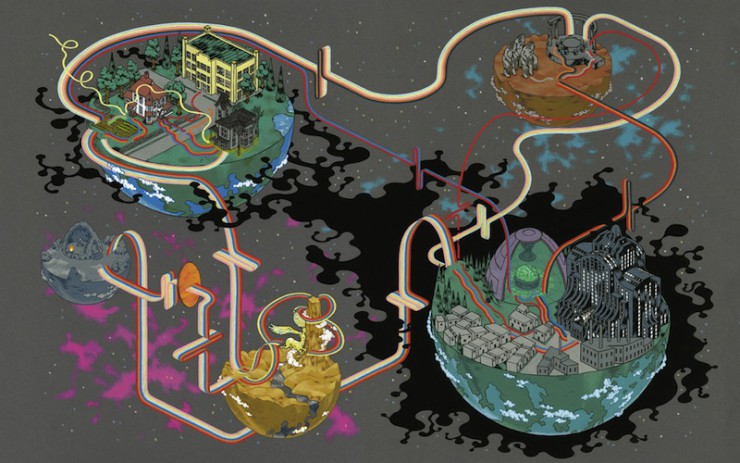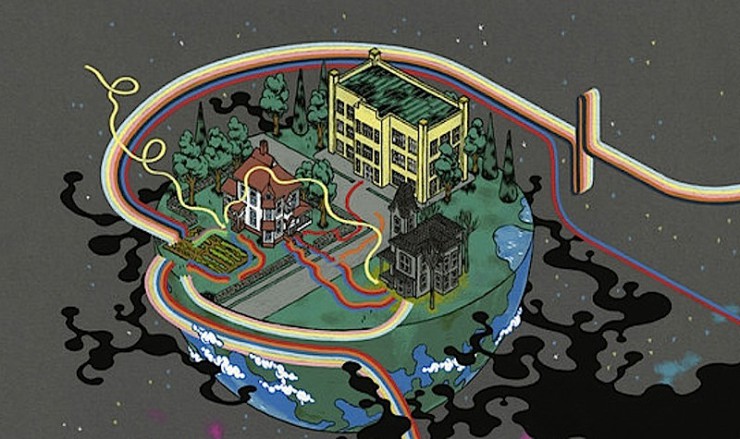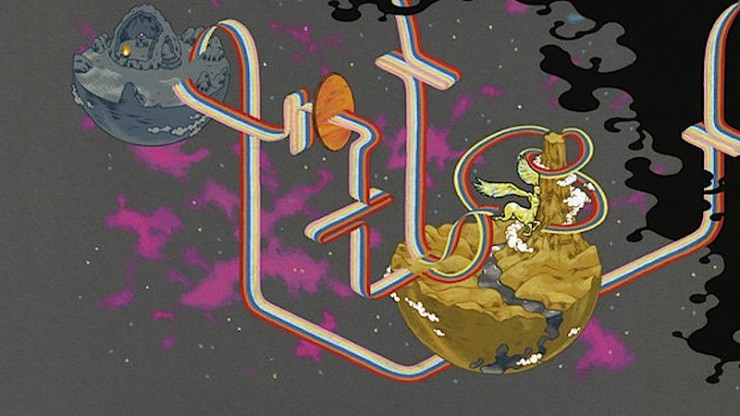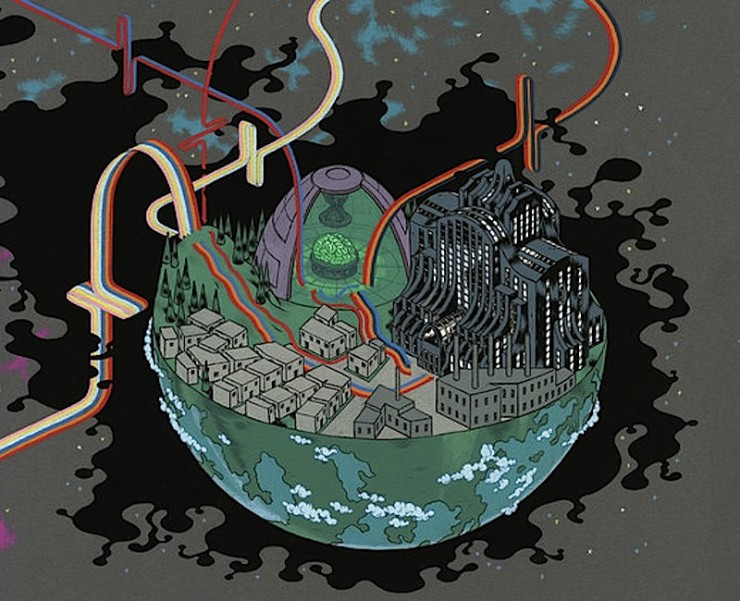Author and Illustrator Andrew DeGraff spent 140 hours hand-painting this fantastic map of A Wrinkle in Time for his book Plotted: A Literary Atlas. Most the maps featured in Plotted are from literary fiction, and remain firmly on land. While the map for A Christmas Carol shows Scrooge’s travels with ghosts, it stays in a historically accurate London; the Watership Down map resembles nothing so much as a particularly grim Family Circus; maps for Robinson Crusoe, The Adventures of Huckleberry Finn, and Invisible Man are all based in solid reality.
For their one truly sci-fi map, however, DeGraaf had to go in a very different direction.
Each character in A Wrinkle in Time has their own timestream, and thus, color. Meg Murry is red, Charles Wallace is blue, Calvin’s line is as orange as his hair, and Mr. Murry is slate gray, presumable because Zachary Gray doesn’t appear in this book. We can follow their various switchbacks and loops, with tessering represented by actual wrinkles in their paths.
While Meg, Charles Wallace, and Calvin travel around the universe with the three Mrs W’s, the twins’ paths stick close to their home and garden on Earth. Also, note how the Black Thing’s creepy tendrils are just starting to encircle us?
And the sidequest to Uriel features the Happy Medium’s cave, the two-dimensional planet that nearly flattens the kids, and a cameo from Mrs. Whatsit’s other form: a golden centaur.
This map achieves an unexpected emotion. At the beginning of the story, a whole rainbow of characters travel together as a united front against the Black Thing. By the time we get to Camazotz the colors have shrunk down to three as the three children go together to rescue Mr. Murray. Finally, only a single red line returns when Meg has to face IT alone to save Charles Wallace.
The all-SFF sequel to Plotted is in the works, right? Maybe we could get an anatomy sketch for A Wind in the Door?















I bought Plotted for myself this past Christmas (because I learned about it here on Tor) and it is a beautiful thing to behold.
It’s been too long since I read that book to appreciate this rendering, but it looks cool enough to prompt a re-read so I can follow it – thanks!